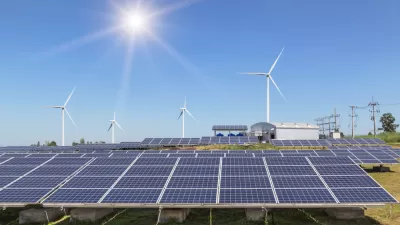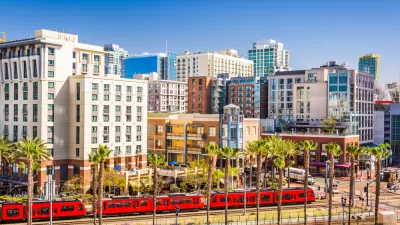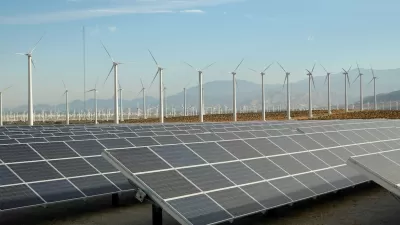Renewable energy is cheap as ever, but zoning isn’t keeping up with the market.

An article by Thor Benson for Popular Science reports on a key obstacle standing in the way of the kind of renewable energy development now possible at scale: zoning codes.
According to Benson, the amount of renewable energy projects is nowhere near commensurate to the economics of renewable energy.
The cost of renewable energy has plummeted over the past decade. The price of solar panels has decreased by roughly 90 percent over the past decade or so and the cost of wind power decreased by over half over that same period. With prices so low, it would be affordable to implement more solar and wind power in the United States than what we currently see.
While some states have fared better than others in rolling out renewable energy (California briefly achieved 100 percent renewable energy production earlier this month, for example), solar and wind power accounts for only 13 percent of the nation’s total energy production capacity, according to a recent report by the Americas for Bloomberg New Energy Finance. According to experts cited by Benson, the “soft costs” of permitting, zoning approvals, and construction are preventing higher levels of renewable energy production.
One 2020 study found getting a permit to install solar panels takes about 50 days on average, which is weeks longer than many other kinds of construction permits take. Wait times have slowly decreased over the past decade, but they remain a barrier.
Moreover:
Then there’s zoning laws…an area might not be zoned for installing renewable energy, which means you can’t install it unless your local government decides to allow it. A zoning ordinance might allow it to be installed but have requirements for where it’s allowed to be installed due to concerns about things like community aesthetics. It could even be entirely unclear if installing a renewable energy system is permissible at all.
Zoning codes in many U.S. cities were written long before climate change would make apparent the need to reduce greenhouse gas emissions from the power grid, or solar and wind energy became a possibility to located in local communities.
The source article, linked below, includes more details about how zoning laws prevent the development of renewable energy resources, and how some states and cities are revisiting zoning to respond to the need for more renewable energy capacity.
FULL STORY: Outdated zoning laws are holding renewable energy back

Planetizen Federal Action Tracker
A weekly monitor of how Trump’s orders and actions are impacting planners and planning in America.

San Francisco's School District Spent $105M To Build Affordable Housing for Teachers — And That's Just the Beginning
SFUSD joins a growing list of school districts using their land holdings to address housing affordability challenges faced by their own employees.

The Tiny, Adorable $7,000 Car Turning Japan Onto EVs
The single seat Mibot charges from a regular plug as quickly as an iPad, and is about half the price of an average EV.

Seattle's Plan for Adopting Driverless Cars
Equity, safety, accessibility and affordability are front of mind as the city prepares for robotaxis and other autonomous vehicles.

As Trump Phases Out FEMA, Is It Time to Flee the Floodplains?
With less federal funding available for disaster relief efforts, the need to relocate at-risk communities is more urgent than ever.

With Protected Lanes, 460% More People Commute by Bike
For those needing more ammo, more data proving what we already knew is here.
Urban Design for Planners 1: Software Tools
This six-course series explores essential urban design concepts using open source software and equips planners with the tools they need to participate fully in the urban design process.
Planning for Universal Design
Learn the tools for implementing Universal Design in planning regulations.
Smith Gee Studio
City of Charlotte
City of Camden Redevelopment Agency
City of Astoria
Transportation Research & Education Center (TREC) at Portland State University
US High Speed Rail Association
City of Camden Redevelopment Agency
Municipality of Princeton (NJ)





























